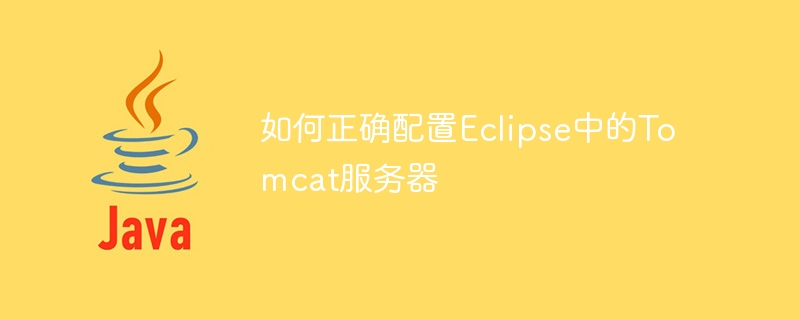

How to correctly configure the Tomcat server in Eclipse
As a widely used development tool, Eclipse provides a convenient way to deploy and run Java Web applications. Among them, configuring the Tomcat server is an essential step. The following will introduce in detail how to correctly configure the Tomcat server in Eclipse, with code examples to help readers better understand and operate.
Step 1: Download and install Tomcat server
First, you need to download and install Tomcat server. The latest version of Tomcat can be downloaded from the Tomcat official website (https://tomcat.apache.org/download-80.cgi). Select the corresponding installation package according to the operating system, download and install it according to the installation wizard.
Step 2: Configure Tomcat server
Next, enter the "Preferences" (or "Preferences") interface through the "Window" menu of Eclipse. Find the "Server" (or "Server") option in the left panel and select the "Runtime Environments" (or "Runtime Environment") tab.
Click the "Add" (or "Add") button, select the "Apache" folder in the pop-up window, and then find the installation path of the installed Tomcat server. Click the "Next" (or "Next") button, check the Tomcat version that needs to be enabled in Eclipse, and then click the "Finish" (or "Finish") button.
Step 3: Create a Web project
Create a new Java Web project in Eclipse. Right-click on the project name, select Properties, and then find the Project Facets option in the left panel.
Check "Dynamic Web Module" (or "Dynamic Web Module") in the right panel and set the corresponding Web module version. Click the "OK" (or "OK") button to complete the creation of the project.
Step 4: Configure the server running environment
Right-click the project name, select "Properties" (or "Properties"), and then find "Targeted Runtimes" (or "Target" in the left panel Runtime") option.
Select the Tomcat version configured in the previous step in the right panel, and click the "Apply" (or "Apply") and "OK" (or "OK") buttons.
Step 5: Deploy the project and start the Tomcat service
Find the project's Web content directory (usually WebContent or WebRoot) in Eclipse's "Project Explorer" (or "Project Explorer") ). Right-click the directory and select Properties.
Select "Deployment Assembly" (or "Deployment Assembly") in the "Properties" dialog box, click the "Add" (or "Add") button, and select "Java Build Path Entries" (or "Java Build Path Entry"), select the "WebContent" directory and click the "Finish" (or "Finish" button.
Finally, right-click on the project name and select "Run As" (or "Run As") -> "Run on Server" (or "Run on Server"). Select the preconfigured Tomcat server in the "Run on Server" dialog box and click the "Finish" (or "Finish") button.
At this point, the Tomcat server has been successfully configured, and the web application has been successfully deployed and run.
The following is a simple sample code that demonstrates how to use Servlet and JSP to develop a simple Web application in Eclipse:
// HelloWorldServlet.java
import javax.servlet.*;
import javax.servlet.http.*;
import java.io.*;
public class HelloWorldServlet extends HttpServlet {
public void doGet(HttpServletRequest request, HttpServletResponse response) throws ServletException, IOException {
response.setContentType("text/html");
PrintWriter out = response.getWriter();
out.println("<html>");
out.println("<head><title>Hello World</title></head>");
out.println("<body>");
out.println("<h1>Hello World!</h1>");
out.println("</body>");
out.println("</html>");
out.close();
}
}
// index.jsp
<html>
<head>
<title>Hello World</title>
</head>
<body>
<h1>Hello World!</h1>
</body>
</html>Through the above steps and sample code, readers can easily Configure the Tomcat server in Eclipse and start developing Java Web applications. This provides a convenient development environment for the majority of Java developers, which can improve work efficiency and accelerate project development progress.
The above is the detailed content of Correct configuration steps for Tomcat server in Eclipse. For more information, please follow other related articles on the PHP Chinese website!




